
We had the pleasure of sitting down with the young and incredibly gifted Concept Artist, Yuki Matsuzawa, who was responsible for visual development on Murdered: Soul Suspect on PS4 and PS3.
Yuki already had a rich history in Concept Art even before joining the Murdered: Soul Suspect team, having joined Square Enix in 2004 to work with Isamu Kamikokuryo on Final Fantasy XIII for several years. Isamu joined us today as well to see how his protégé had applied his experience with Final Fantasy to a more western game.
In order to show you just how successful this collaboration turned out to be, we were fortunate enough to not only talk about the origins of the game, but Yuki even shared some of his original work for you to feast your eyes on.
First up is a sketch of our protagonist, Ronan O’Connor, which was drawn soon after Matsuzawa joined the Murdered team. As there were no reference materials depicting the reality of a ghost-on-ghost fight (whether they had guns or hit each other with their fists), Matsuzawa came up with several ideas about how best to show such a ghostly battle.
The image is “a proposal for having the protagonist inflict damage on enemy ghosts by passing through their bodies,” says Matsuzawa. Kamikokuryo believes that this piece primarily focused on the “large glowing effects that the ghosts produce.” Look closely enough and you’ll see a floating ghost within the light’s momentum. “You can definitely get the feeling of the team being a little lost while searching for and refining the concepts for the project,” he added.
The above image shows Ronan protecting the ghost of an innocent young girl from the dark spirits that roam the city. Notice how a cat has sensed the dark spirit but it’s invisible to the living homeless man.
“It takes on a very tricky composition,” Kamikokuryo stated, “the decision to have the girl, the most emotional of these characters, deliberately positioned right at the edge gives idea of the game’s unstable and uncertain setting.”
Our next piece of art also depicts the relationship between the world of the living and the spirit world. The living are completely oblivious to the presence of ghosts and the dark spirit approaching from the horizon.
Commenting on the image Matsuzawa said: “At the time this was drawn the spirit world had a conceit where objects related to the deceased in a previous life remained,” and if you look closely enough you can see the ghostly remnants of hospital beds remaining.
This image is an experiment with the world’s setting and atmosphere in order to add stronger ties between the real and spirit worlds. The vista is based on old-time cities and contains fantastical elements such as the tower that connects the earthbound land of the living with the realm of “heaven.”
The buildings in the backdrop have a strong sense of originality about them. “In some ways, I can see the kind of fantasy aesthetic that has been cultivated with the Final Fantasy series here,” says Kamikokuryo.
This image was conceived to explore the key visual elements for the game. Ronan reaches out to touch his wife as she mourns at his own funeral but his hand passes through her.
Matsuzawa comments that: “The world setting and scenario have been greatly changed since this was drawn, and as a result this sequence has been removed, but it gives a glimpse of the sadness consuming our central character.”
In this particular image, the enemy ghosts are depicted as creepy gentlemen with black suits and red ties. These evil spirits were also proposed to have different appearances, such as insect-like monsters, armored figures, and creatures with a robotic form.
“The first thing that strikes me is the great expressions worn by the ghosts,” says Kamikokuryo. “The surrounding buildings have a slightly non-specific cultural base but provide a very atmospheric setting.” As you can see, it seems Ronan’s visual style has been more or less fixed down by this point.
Our final piece of concept art was created around the same time as the previous one and illustrates a confrontation between two spirits.
When asked about the idea to set the scene on a stage show, Matsuzawa commented: “The idea of ghosts fighting a fierce battle while living humans can’t see them was an interesting one, so we chose a stage during mid-performance for the setting as it is somewhere that many eyes would be turned to.” In agreement Kamikokuryo added: “I was drawn to consider the visceral impact of the visuals before looking deeper to try to make sense of the setting. The backdrop, characters, and effects are all drawn with a flawless sense of balance”.
So what do you think of the concept art? Hit us up with your questions in the comments below. We hope you’ve enjoyed reading about the origins of Murdered: Soul Suspect as much as we enjoyed discovering it!
Murdered: Soul Suspect is out now on PS4 and PS3.



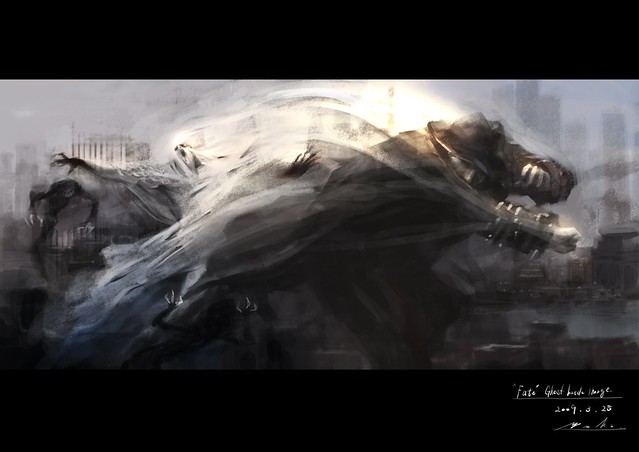
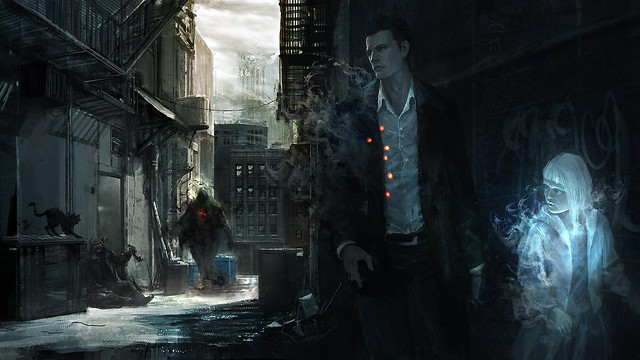
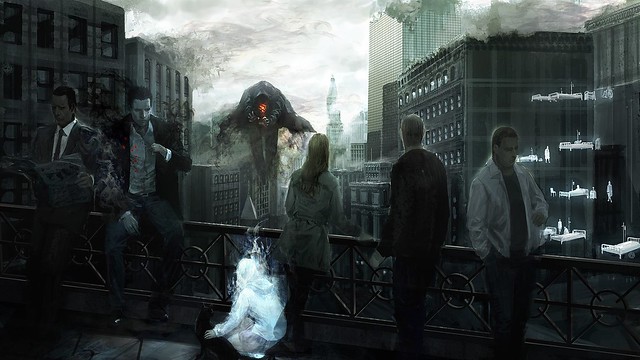
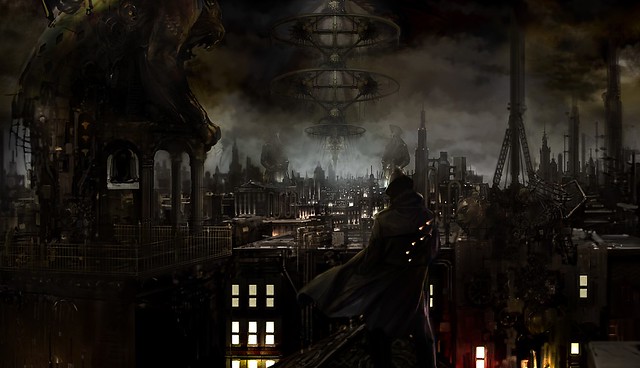
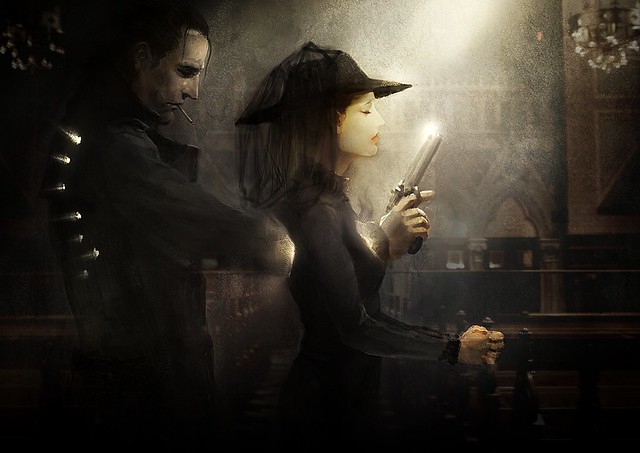
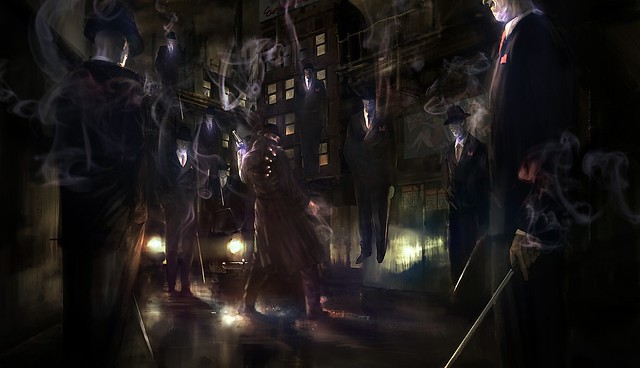
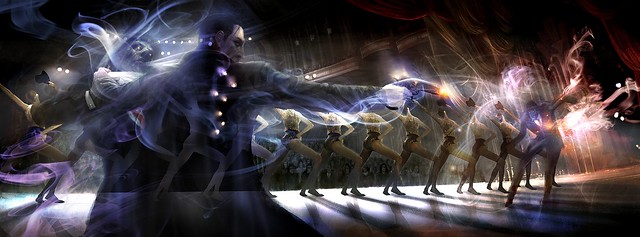








Comments are closed.
7 Comments
Loading More Comments